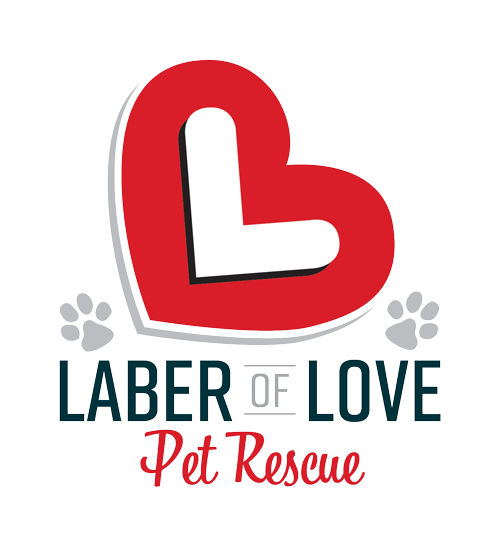
Caring For A Pet With Heart Disease: A Friendly Guide For Dog Owners

Separation Anxiety in Dogs Part 2 of 2 – Treatment and Management Strategies

In Part 1, we discussed how separation anxiety is a medical condition characterized by distress behaviors when dogs are separated from their family. Now, let’s explore evidence-based treatment approaches recommended by veterinary behaviorists to help your dog overcome this challenging condition.
Looking online, you may find a wide variety of recommendations and it can be difficult to evaluate their effectiveness. Everyone has a story of a dog that improved with “XYZ” — and maybe that’s true, but we should look for science based techniques that help the vast majority of dogs, not just the one off thing.
When evaluating this information, you should always avoid:
- Punishment or “tough love” methods: These increase anxiety and fear, potentially worsening the condition and damaging the human-animal bond. Forcing a dog to “get used to it” through extended separations can cause significant psychological distress and worsen the condition.
- Extended exercise before departure: While appropriate exercise is important for overall wellbeing, the belief that “a tired dog won’t be anxious” is not supported by research.
- Getting another pet: Research shows this rarely resolves separation anxiety as the attachment is to the human caregiver and not a result of boredom.
A Multimodal Approach
There is no one size fits all treatment for separation anxiety. Treatment requires a comprehensive strategy with multiple facets — a “multimodal” approach — each of them backed by science and professional expertise.
- Evidence-based behavior modification
- Environmental management
- Psychotropic medications
- Professional guidance
A Realistic Timeline
We should also establish realistic timelines for these pets — again, this is a medical condition. Many dogs show improvement within 2-4 months, though some dogs may not. Improvement is gradual and requires consistent treatment monitoring even after improvement, likely for life.
Evidence-based Behavior Modification
Rather than “dominance” or “leadership” approaches promoted by some non-credentialed trainers, the foundation of separation anxiety treatment is systematic desensitization combined with counterconditioning:
- Systematic desensitization: Gradually exposing the dog to very brief periods of separation that don’t trigger anxiety, then slowly increasing duration as the dog shows comfort.
- Counterconditioning: Creating positive associations with previously fear-inducing situations.
Departure Cue Desensitization: Veterinary behaviorists recognize that dogs with separation anxiety often become distressed at pre-departure cues (picking up keys, putting on shoes). Treatment involves performing these actions repeatedly without leaving, gradually desensitizing the dog to these triggers.
Gradual Separation Protocol: This must be implemented extremely gradually, often beginning with durations of just seconds. It is critical to not progress to longer separations until the dog shows no signs of anxiety at the current level. Video recording during absences is considered essential for accurate assessment. This process can be excruciatingly slow and even seem over the top! It’s your best chance of success.
Environmental Modification
Evidence-based environmental management includes:
- Creating a predictable environment and schedule that minimizes anxiety triggers.
- Providing appropriate cognitive enrichment through food-dispensing puzzles and safe chew items.
- Using scientifically validated products like pheromone diffusers (Adaptil) or specific auditory enrichment designed for canine anxiety like Through A Dog’s Ear music or even white noise.
- Carefully considering confinement—for many dogs with separation anxiety, crating can significantly increase distress and is counterproductive.
- Window access should be limited where feasible.
- Arrange for qualified pet sitters or doggy daycare facilities if your dog would do well in these circumstances.
- Utilize remote veterinary consultations for monitoring and plan adjustments to minimize veterinary office stress.
- Consider temporary adjustments to work schedules when possible.
- Avoid leaving the dog alone beyond their current comfort threshold as determined by your treatment plan wherever possible.
Psychotropic Medications
While people are often anxious about the possibility of medicating their dog, the benefits significantly outweigh the risks in the vast majority of patients. We should remember that these dogs have physical and chemical changes in their brain. Medication helps improve these changes. Also, we should remember that these dogs are suffering — medication is a humane way to help improve a dog’s quality of life. First-line medications like fluoxetine and clomipramine have strong evidence supporting their efficacy in canine separation anxiety. They may be enough, but there can also be adjunctive medications used like trazodone or gabapentin. Despite a wide variety of unregulated and unreviewed claims, the vast majority of calming supplements available are no more effective than a placebo sugar pill.
Medication protocols typically require 4-8 weeks for optimal effect, with regular monitoring and potential adjustments by your veterinarian. A premature discontinuation of medication is a common cause of relapse.
Professional Guidance
All of this should be done in consultation with a professional.
- Consultation with a board-certified veterinary behaviorist (Diplomate of the American College of Veterinary Behaviorists) – while limited in Ohio, they are available. Telemedicine consultations are also available either directly or, more typically, through your veterinarian.
- If a board-certified specialist is not available, working with a veterinarian who has additional training in behavioral medicine.
- Caution regarding trainers who lack appropriate credentials—look for certification from organizations that require education in learning theory and evidence-based methods, such as certified professional dog trainers (CPDT).
Ken Brunson DVM, Board Member
Separation Anxiety in Dogs Part 1 of 2 – Defining, Distinguishing, and Diagnosing

Navigating The Journey Of Pet Loss And Grieving

How Senior Cats Needs Change

The Benefits Of Getting County Dog Tags In Ohio

Veterinary Mythbusting

Myth 1: Any CBD product will work.
With increasing marijuana legalization and interest, there’s been an explosion of CBD products for both people and pets. However, marketing has gotten ahead of science. There is promise for certain conditions like pain and epilepsy. But, other claims like improved coat health appear to have limited evidence. There is wide variation in quality and effectiveness because of the lack of oversight. Compared to prescription medications, CBD products are supplements with significantly less oversight. As a result, there are many substandard products on the market. According to Cornell University’s College of Veterinary Medicine, “a study that evaluated 29 CBD products for pets and found heavy metal contamination in four of the products. The research team determined that two products had no cannabinoids in them. Of the remaining products, only 10 were measured to have a total cannabinoid concentration that was within 10% of the amount that they claimed to have on their label.”
Use careful consideration in selecting a product. Given the abundance of approved, well studied, and regulated products available for most conditions, any CBD product should be viewed as supplements in a therapy plan.
Myth 2: Canned pumpkin helps treat diarrhea.
The fiber in canned pumpkin is vastly overrated compared to fiber supplements or therapeutic high fiber diets for pets. In fact, to feed the same amount of fiber as a therapeutic diet or supplement to a medium sized dog, you’d have to feed about 12 cups of canned pumpkin per day! For a cat, it’d still be a large amount – 2 and ½ cups! The volume alone will fill up your pet, which will mean they will miss out on getting other key nutrients in their diet. When pets improve while being fed pumpkin, it is likely a result of the increased water intake and the fact that many cases of acute diarrhea improve within days on their own. Better sources of fiber include unflavored, unsweetened versions of Benefiber or Metamucil or therapeutic high fiber diets. The type and amount depends on the size of the pet and what type of diarrhea they are having – always check with a veterinary professional! Any pet that seems ill, has repeat diarrhea cases, is a puppy/kitten, or has recently been around other cats or dogs should be evaluated by a veterinarian.
Myth 3: Fleas can’t get pets indoors or in the winter.
This risk of fleas is lower in the cooler months, but it’s growing. The vast majority of cats I see in practice with fleas are classified as “indoor only” — and there are virtually no dogs that never go outside. If we were able to jump like fleas, we could jump over skyscrapers – it’s no wonder they can get inside! Also, because our winters are warmer now, there seems to be no decrease in the number of flea cases in dogs or cats in the winter months.
Myth 4: Benadryl will help itchiness.
Benadryl (and other similar medications like Claritin) are antihistamines. They block the action of a molecule called histamine that causes a lot of allergy symptoms in people. But, histamine plays very little – if any – role in pets’ skin allergies. Our pet’s itchy skin is better compared to eczema than our seasonal allergies. There are a variety of medications that better control these symptoms. These should be paired with strategies to help reduce or avoid exposure and sensitivity.
While we’re at it – pets are more likely to have food allergies to a food they have eaten for a long time, not a new diet! Also, proteins trigger allergies and pets become allergic to the protein regardless of the diet quality.
Ken Brunson DVM, Board Member
Mammary Cancer Awareness

Signs Of A Senior Pet

Watching our pets grow older is a bittersweet experience. The longer they’re with us the more memories we develop and experiences we share, but it’s hard to watch them age. We owe it to them to address their needs and make sure they’re well cared for given all of the support they provided us over the years. Recognizing the signs that your pet is aging is crucial to providing the best care in their golden years. Here’s how to tell if your pet is entering their senior years, what to expect, and when to be concerned.
Understanding “Dog Years”
Have you heard the saying that “one dog year equals seven human years”? While this rule of thumb offers a rough idea, it doesn’t capture the differences among different breeds and sizes and doesn’t really apply to cats at all. Smaller dogs tend to live longer than larger dogs and, often, they age more slowly. Cats more closely “follow” small dogs. For example, a 10 year old small dog or cat is about 56 years old, but a giant breed dog like a Great Dane at 10 years old is 80 years old.
When is My Pet a Senior?
According to the American Animal Hospital Association (AAHA) and the American Association of Feline Practitioners (AAFP), pets are considered senior at the last 25% of their expected life span. This depends on breed and size, but the following guidelines are generally used:
- Small dogs (under 20 pounds): 10 years old +
- Medium dogs (21-50 pounds): 7 years old +
- Large dogs (51-90 pounds): 6-7 years old +
- Giant dogs (over 90 pounds): 5 years old +
- Cats: 10 years old +
What is Normal Aging?
The age guidelines are based on when some expected changes are likely to be detected in your pet. Age is just a number, and we all undergo this process at different rates. However, we expect certain changes to occur in our pets. This includes:
- Changes in vision and hearing: Mild cloudiness in the eyes and some hearing loss are typical in dogs but less common in cats.
- Weight changes: While many pets maintain their appetite, their activity tends to decrease to gaining weight, but losing muscle mass is the most common outcome.
- Reduced mobility: Joint stiffness and slower movement are extremely common. In fact, more than 90% of cats over the age of 10 have arthritis. Older pets might take their time getting up and moving around or have difficulty accessing parts of the house.
- Behavioral changes: They may be less interested in playing or more anxious about new situations. Sleep cycles or house training may change.
- Skin and coat changes: You might notice gray hair, especially around the muzzle or face. Their coat might be duller or that may groom themselves less frequently. Sometimes, pets may overgroom an area that is painful.
Distinguishing Normal Aging from Disease
While many changes are part of normal aging, others might indicate underlying health issues. Here’s how to tell the difference:
Normal Aging:
- Gradual onset of symptoms. These may be only noticed by looking back at previous photos or videos or noted by someone who has not seen your pet in a while. Or, you may realize one day that things have changed without necessarily thinking about it beforehand.
- Mild changes in behavior and activity. If there is a dramatic change, something else may be going on.
Potential Health Issues:
- Sudden changes in behavior, weight, or appetite
- Severe mobility issues or pain
- Significant changes in drinking and urination
- Persistent coughing or difficulty breathing
If you notice any of these signs, it’s essential to consult your veterinarian. Conditions like arthritis, diabetes, kidney disease, and dental disease are more common in older pets but can be managed effectively with proper care. The best prevention for many of these diseases is twice yearly senior wellness exams for your pet. Our pets cannot speak for themselves, but veterinary professionals can work with you to combine your knowledge of your pet with their expertise to determine what can be done to help keep your pet comfortable and happy.
Home Care for Your Senior Pet
Providing the best care for your senior pet involves a balanced diet, moderate exercise or enrichment, a consistent and predictable environment, and lots of love and attention. Adjusting their diet to accommodate lower energy levels and ensuring they stay active without overexertion can help maintain their health and prevent additional wear and tear on their joints. While some pets may perk up with a new companion, this may not always be the time to adopt a younger pet.
–
Remember, every pet ages differently. Pay attention to their needs and changes, and always seek veterinary advice if you’re unsure whether a change is aging or a sign of something else. By staying informed and proactive, you can ensure your loyal pet enjoys their senior years comfortably and happily.
Ken Brunson DVM, Board Member
Helping Create A Healthy Bonded Pair

-
They tend to wait for the other one to eat and make sure the other one is getting food/treats; they often share food and toys.
-
They show signs of affection such as cleaning the ears, licking the face, etc.
-
They have lived together for an extended period of time.
-
They might get particularly stressed or anxious when they are separated for any reason.
-
They feel the need to play a role among each other, dominance or submissive.
-
Train each pet individually. Take the time to work with only one pet at a time.
-
Separate walks and playtime.
-
Discover individual “jobs” for each pet according to their strengths and enjoyment. e.g. going to get the mail, car rides to the gas station, pet store visits, any regular activity that can include your pet.
-
Taking turns for affection. e.g. cuddling, grooming, sleeping
Taking Responsibility For Your Pet

Caring For Deaf Pets

The Facts About The Birds And The Bees

When To Euthanize?

What Is Librela

The Importance Of Dental Health

What Is Cushing’s Disease?

Cushing’s disease, while rare in people, is very common in dogs. Overall, it’s usually around 600,000 cases a year, and with a disease that can be hard to diagnose, the numbers could be even higher. Despite your species, however, Cushing’s disease is an overproduction of cortisol by the adrenal glands (above the kidneys). Cortisol, or the stress hormone, plays a vital role in regulating immune systems, energy, liver function, and multiple other organ functions. However, when the body produces cortisol in excessive amounts for a long period, it can damage the body drastically.
Most of the time, the disease is a result of tumors on glands that either end up releasing too much cortisol, or overproducing ACTH that then tells the adrenal glands to over-make more cortisol. Another possible reason could be from steroid medication.
Generally, once diagnosed, Cushing’s disease does not get treatment. Cushing’s is likely fatal, but surgery to remove the tumor or radiation therapy has seen significant success.
To help catch signs early, make sure you pay close attention to your pet’s behavior. Generally, most owners can tell when their pet is acting different, or has a different physical appearance, but hone in on these things:
-
Increase in thirst and appetite
-
Increase in urination
-
Increase in panting
-
Reduced physical activity like playing, running, etc.
-
A potbelly, and different skin issues
These issues are not all necessary for a diagnosis, they’re just the general reports of pets who have Cushing’s disease. If your dog or cat starts to have symptoms similar to these, make sure to monitor their behavior to see if they may have more than one, and bring them to a vet for an evaluation.
https://sashvets.com/diseases/canine-cushings-disease/
https://vcahospitals.com/know-your-pet/cushings-disease-in-dogs
Clara Brown, Junior Board Member
Bonded Pairs (Losing One)

Helping Our Pets Through The Holidays

Mammary Cancer

Feline Leukemia

Kids And Pet Responsibility

When having pets with a family, it’s important to teach your children responsibility and how to respect animals. As someone who grew up, and is still growing up with animals, I learned quickly that not all animals will put up with being treated roughly. Both dogs and cats alike will let you know if something is bugging them by leaving, running away and hiding, or nipping and scratching. Although this will eventually teach your child how to be respectful of your animal’s space, it’s still a good idea to teach your child how to be mindful of your pet.
Whenever you get a pet, it’s a good idea to teach your child that pets are not toys. Like people, they eat, sleep, and need exercise. The best way to teach a child this is by involving them in feeding, walking, and training of your pet. Involving kids in the process of caretaking helps casually teach them the basics of walking and feeding your pet. It is not a good idea to get a pet for your child and leave them to take care of a pet unsupervised. As your kid gets older, you can start to
give them jobs related to the pet, like walking your dog, or changing your cat’s litter, or feeding your animals.
When it comes to respecting an animal, most pets will let you know when they’ve had enough, but you still want to monitor your kids with pets. You don’t want your child to tug on your pet too hard and risk your kid getting nipped or scratched, or hurting your pet. You most likely wouldn’t let your child pull and tug on another kid’s arms or hair, so don’t let them do that to your animal, either. It’s okay to pet and play, and as you continue taking care of your pet, you’ll begin to bond with them and get an understanding of their boundaries and what they like and dislike, but you still need to be aware of general respectfulness of your animal and their space. Hitting, constant tricking, or neglecting your animal is bad pet ownership.
If your child is old enough, it’s a good idea to teach them a general understanding of space and what their responsibilities should be with your pet. Knowing how to take care of a living animal is a great skill for your child to have. Owning a pet is a great way to teach kids empathy and appreciation for life in general. (But this is not just a learning experience for your child, it is also the life of an animal so you MUST keep that in mind when taking on a pet.)
Overall, growing up with a pet is an invaluable experience for your entire family if done responsibly. Remember to be mindful of the commitment of getting a pet for your entire family during the adoption process. Again: this is a living thing, treat them like one.
For more information on the relationships between children and pets you can visit these websites:
https://www.aprilaire.com/blog/responsible-pet-ownership-teaching-kids-dos-donts/
https://texashumanenetwork.org/teaching-kids-to-be-nice-to-animals/
Clara Brown, Junior Board Member
How To Care For A Blind Dog

Building A Happy Pack From The Start

Potty Training A Senior Dog

Bringing home any new dog can come with challenges, senior dogs are no exception. However, one benefit of senior dogs is many of them are already housetrained (to me that is a huge benefit!) That is not always the case, though. And even if it is, the dog may need a refresher when entering a new home. So how do you potty train a senior dog? It is much the same as any other dog, but there can be some subtle differences. One is how stubborn the dog is or how willing to learn. I’ll be the first to admit some seniors are really stubborn, like our little sassy girls Heaven and Nevaeh. However, some are so eager to please that potty training is a breeze! The other consideration with senior dogs is health issues. If potty training doesn’t go as planned, it is always a good idea to visit your vet to make sure there aren’t any underlying health issues. Urinary issues become more prevalent as our pets get older and affect their frequency of urination and the urgency with which they need to go. Kidney issues can also have an effect. There are other health issues that cause “leakage” and hinder the pet’s ability to even know when they are urinating. It’s very important to be aware and talk to your vet if you are seeing any of these issues. Personally, I use a combination of a crate/playpen and keeping the dog tethered to me when I first bring a new one home to potty train. This gives me more control over where the dog goes and what the dog does. I can also keep a close eye on them and start to recognize their “cues” shown when they need to go potty. Some dogs prance around, some start sniffing more, some turn circles and some start staring at me more. Seems every dog has a different “cue”, and it’s important to recognize your dog’s. Keeping the dog tethered to you also helps form a bond with the dog. I treasure the bond that I make with each and every one! This combined with frequent trips outside and establishing a schedule are the keys to my household. Unfortunately, potty training isn’t always a possibility for senior dogs though. This may be because of past experiences that we know nothing about or because of health issues. If that is the case for you and your dog, there are tools that can help! Diapers, belly bands, and puppy pads have been life savers (and flooring savers) for Laber of Love fospice parents! Hopefully, the attached article can help you if you choose to bring home a senior pet. Be patient, don’t give up. The love of a senior dog is well worth a little time, angst, paper towels, and floor cleaners! https://www.petmd.com/dog/training/ins-and-outs-potty-training-older-dogs-0?
Nicole Laber, Fospice Mom and Board Treasurer
Lyme Disease Prevention

Picky Pets/Medication

Tooth Or Consequences

Why Shelter Seniors?

Keeping Our Pets At A Healthy Weight

Should Pets Be Gifts?

Cancer In Dogs And Cats

Finding a lump or a bump on your pet can be scary. I know it is for me. As an owner of many older dogs, I’ve definitely seen my share of lumps and bumps! Many of them turn out to be malignant and harmless, but some are not. So how do you know the difference? For me that is an easy answer – I ask the Vet! I trust them to tell me what I need to worry about and what I don’t. Sweet little Heaven has several lumps, but thankfully they are cysts that form in oil glands, sebaceous cysts, and are completely harmless. On the other hand, Nevaeh has the beginning of a mass in her mammary chain. This one is concerning because of the location. It’s not necessarily cancer, but we will definitely be keeping an eye on it and so is the Vet. We rely on them to tell us what to do for diagnosis and when the best time to do it. That is the best advice I can give you if you feel anything talk to your Vet.
Senior Companionship 4 Seniors

Laber of Love Pet Rescue is a fospice care organization. Our mission is to place experienced pets in loving homes for the remainder of their lives. We also realize that the companionship goes both ways offering unconditional love thus posing the question “Who rescued who?”. Attached is an article that refers to the benefits of senior adults and pet ownership. As pet lovers, none of us can argue any of the points of the benefits of pet ownership, *Healthy behavior habits. *Improves activity. *A sense of purpose. *Increases interaction. *Relieves stress. *Companionship. The alternative to the above list is the considerations that a senior must face in order to continue to be a pet owner during this season of life. *Experienced pet owner. *Choosing the right pet. *Financial stability. In addition, the article adds that getting an older pet would be a good choice. Laber of Love Pet Rescue could be a valuable asset when it comes to deciding whether or not a pet is an option during a senior’s years. Going back to the list of concerns it suggests that being an experienced pet owner is helpful. While some experience is very useful, Laber of Love has an amazing support system put in place to assist with the basic needs of a pet owner from having a trainer available to reach out to when a questionable behavior might arise. And finding the right pet is just as important to Laber of Love as it should be an honest concern for the new owner. Laber of Love volunteers will be looking for just the right fit in order to make a successful match. Finally, the financial burden that a senior might feel when wanting to take the best care of their new companion. This is where the Laber of Love family of supporters has stepped up in order for our mission to be complete. Laber of Love Pet Rescue is committed to providing the comfort care our fospice pets deserve for the remainder of their lives. We are even there if Vet visits are a problem to manage. Laber of Love Pet Rescue is so grateful for all the love and support that is sent our way for fospice rescue! We want to continue to pay it forward by sharing the love in the best way possible, saving lives. If you are interested in knowing about ways to help or how our fospice program works check out the fospice section of our website @ https://www.laberoflovepetrescue.com/#fospice
Additional info can be found @ https://www.homeinstead.com/location/347/news-and-media/benefits-of-companion-animals-for-elderly/
Research Before Getting A Dog

This may be a long post so please stay with me here. I want to talk to you today about adding a new dog to your family. When it’s time to add a new family member, and getting a dog is adding a new family member, you are committing to keeping that dog for its entire life. Please, first think about that. We’ll talk about breed and size in a minute, but age is a consideration too when getting a new dog. If you are adopting a puppy, that could be 15-18 years depending on the breed. Are you ready for that commitment? If not, is an older dog right for you? Puppies require quite a bit more time and training as they need their owner to teach them almost everything. Older dogs generally still require some training and patience as they enter a new home, but it’s usually quite a bit less than a puppy.
Second, think about where and how you live. The breed, size, and temperament of the dog you adopt should be compatible with your living situation and your personality. Apartments are great for some dog breeds that don’t need a ton of exercise, but some dog breeds need a home with a large fenced-in yard to get in some playtime. Do some research to find the right breed/mix for your situation. There are lots of websites out there that can tell you all about the breeds and what each needs and the adoption counselors whom you are going to adopt your dog from are great resources to help as well. Not only can they tell you about breeds, but they can tell you about each specific dog too. Listen to them.
Third, don’t forget your family. Make sure you pick a dog that is good for your family situation now and for the future. Do you have kids now or plan to? Do you have other dogs or cats or plan on adding more? Do you have farm animals? Do you want a dog that will travel with you? Plan for now and for the next 10 years.
And finally, make sure you have a plan and finances for all the things that your new dog will need. Some breeds are prone to health concerns that will require additional Vet care, but all dogs will need a minimum of annual check-ups and vaccines. Food, supplements, toys, and training should not be forgotten either. Grooming is also very important to consider. Be sure to know what grooming needs your new dog will have. Will you need to brush/bathe the dog at home frequently? With the dog need to see a professional groomer regularly?
Please take some time to think about all of this before bringing a new dog into your family, and have a discussion about it with the entire family. This is an important decision that should be given thought and consideration. Too many homeless dogs are in Shelters because their families didn’t take the time and understand what they were bringing home. Shelters and Rescues are overwhelmed. Take time to be a part of the solution, not the problem. Pick a dog that fits your home and lifestyle, not just because it is “cute” or you feel sorry for it.
For more information, please take a look at the following: https://www.happyhounduniversity.com/single-post/essential-factors-to-consider-when-adopting-a-dog
Nicole Laber, Fospice Mom and Board Treasurer
Why Canine Influenza Vaccine

As of recent more and more dog boarders are starting to request that dogs have their canine influenza vaccine, but exactly why? Well, canine influenza, or CI, is a highly contagious viral infection, which is mainly seen in dogs. CI is transmitted through droplets from coughing, barking, and sneezing. CI can also be spread indirectly through shared feeding or drinking bowls, collars, or leashes. Because of CI’s fast and invisible transmission between dogs, this infection is easily contracted and shared between pets, making the vaccine highly suggested by vets and other pet health professionals. But what does the Canine Influenza vaccine do? Similar to human vaccines, the CI vaccine is not going to stop your dog from ever contracting CI, but make the symptoms and severity of the illness less harmful and long-lasting. This allows you if in serious condition, to check in with a vet to ensure your pet’s health and that they aren’t in clinical condition. And this doesn’t just stop with dogs. CI can spread to cats too, causing respiratory complications, fever, and eating inconsistencies. Because of this, CI vaccines for both your canine and feline friends are often recommended or required for most boarding shelters. As always, be sure to check with your Vet for specific recommendations for your pets. For more information, visit the AVMA website: https://www.avma.org/resources-tools/animal-health-and-welfare/canine-influenza
Clara Brown, Junior Board Member
Why Foster/Fospice Care

The Importance Of Microchips

My Dog Is Having A Seizure – What Do I Do?

Seeing your pet having a seizure is one of the scariest things that has happened to me as a pet owner. I hope that by writing about my experience I can help someone else who may have this happen to them at some point in their pet ownership journey. Twenty years ago, I had no idea what to do or what my dog having a seizure meant the first time it happened to one of our pets. Poor little Sadie barked at me to wake me up in the middle of the night and was running around the house as I had never seen her do before. Then she collapsed and just started shaking uncontrollably; she wouldn’t respond to anything I was saying to her. The shaking lasted for about 2 minutes, but to me, it seemed like 20. After the shaking stopped, she laid there for a while and slowly “woke up” and was just very tired the remainder of the night. This was 20 years ago, our Vet didn’t have emergency hours; I didn’t know if there was a 24-hour emergency Vet anywhere like there is today. I don’t think I slept at all the rest of the night. Thankfully though when we did get to the Vet the next day, they didn’t find anything wrong with our girl and she lived another 12 years before having another seizure.
The next seizure was much more severe than the first. It was at 1 o’clock in the morning. But this time I knew what to do. It wasn’t completely unexpected – we knew that Sadie had a nasal tumor and our time with her was growing short. That didn’t make the seizure any less scary because it was much longer than the first – this one lasted well over five minutes. And she did not recover from this one. All I could do was lay beside her and talk softly to her to let her know she wasn’t alone. Following this seizure, we took our girl to MedVet where we humanely euthanized her because we knew that was the right thing to do for her. We loved our sweet Sadie for 14 years through her very last breath.
Please take a moment to read this article to learn more about the causes of seizures in pets, what the signs of a seizure are (because it’s not always the flailing, shaking like what we experienced with Sadie) what to do for your pet when one happens, and how to talk to your Vet. This may one day help when you least expect it. The more we know, the better pet owners we can be.
https://www.akc.org/expert-advice/health/dog-seizures-what-to-do/
Nicole Laber, Fospice Mom and Board Treasurer
Female Dogs Don’t Get Menopause!




